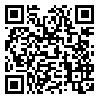Volume 34, Issue 4 (12-2025)
JGUMS 2025, 34(4): 396-409 |
Back to browse issues page
Research code: IR.MUI.NUREMA.REC.1400.145
Ethics code: IR.MUI.NUREMA.REC.1400.145
Download citation:
BibTeX | RIS | EndNote | Medlars | ProCite | Reference Manager | RefWorks
Send citation to:



BibTeX | RIS | EndNote | Medlars | ProCite | Reference Manager | RefWorks
Send citation to:
Khoshkchali A, Torkian S, Majidnia M, Torkian S. The attitude of healthcare workers at Isfahan University of Medical Sciences towards childbearing after covid-19 pandemic in 2022. JGUMS 2025; 34 (4) :396-409
URL: http://journal.gums.ac.ir/article-1-2732-en.html
URL: http://journal.gums.ac.ir/article-1-2732-en.html
1- Student Research Committee, School of Public Health, Isfahan University of Medical Sciences, Isfahan, Iran.
2- Department of Health Education and Promotion, Nutrition and Food Security Research Center, School of Health, Isfahan University of Medical Sciences, Isfahan, Iran.
3- Department of Epidemiology and Biostatistics, School of Medicine, Kurdistan University of Medical Sciences, Kurdistan, Iran.
4- Department of Epidemiology, School of Health, Iran University of Medical Sciences, Tehran, Iran.
2- Department of Health Education and Promotion, Nutrition and Food Security Research Center, School of Health, Isfahan University of Medical Sciences, Isfahan, Iran.
3- Department of Epidemiology and Biostatistics, School of Medicine, Kurdistan University of Medical Sciences, Kurdistan, Iran.
4- Department of Epidemiology, School of Health, Iran University of Medical Sciences, Tehran, Iran.
Abstract: (816 Views)
Background The COVID-19 pandemic has negatively affected the population growth of countries; therefore, the birth rate in Iran has decreased significantly during this period.
Objective This study aimed to determine the level of attitude of healthcare workers at Isfahan University of Medical Sciences towards childbearing after the COVID-19 pandemic in 2022.
Methods In this descriptive cross-sectional study using a simple sampling method, health centers of Isfahan University of Medical Sciences were included, and 2830 healthcare workers participated. Information was collected using the standard questionnaire of attitudes towards fertility and childbearing, and data were analyzed using STATA software, version 17.
Results Among the 2830 participants, 2248(79.43%) were women and 582 20.57%) were men. The average age of the participants was 38.31±7.96 years. Of all the participants, 2358 people (83.32%) were married, and the average attitude score of individuals was 55.81±7.85. The results showed that the level of attitude had a significant relationship with female gender and higher education level, but with the increase in the number of children, there was a significant decrease (P<0.001).
Conclusion Based on the findings, the attitude score in women was higher than in men and increased with the duration of cohabitation. Improving healthcare workers’ attitudes towards childbearing can be an effective way to motivate people and increasing the fertility rate. Therefore, to enhance the attitude of couples, especially health staff, and in critical situations, it is necessary to implement educational and supportive programs, as well as more effective interventions.
Objective This study aimed to determine the level of attitude of healthcare workers at Isfahan University of Medical Sciences towards childbearing after the COVID-19 pandemic in 2022.
Methods In this descriptive cross-sectional study using a simple sampling method, health centers of Isfahan University of Medical Sciences were included, and 2830 healthcare workers participated. Information was collected using the standard questionnaire of attitudes towards fertility and childbearing, and data were analyzed using STATA software, version 17.
Results Among the 2830 participants, 2248(79.43%) were women and 582 20.57%) were men. The average age of the participants was 38.31±7.96 years. Of all the participants, 2358 people (83.32%) were married, and the average attitude score of individuals was 55.81±7.85. The results showed that the level of attitude had a significant relationship with female gender and higher education level, but with the increase in the number of children, there was a significant decrease (P<0.001).
Conclusion Based on the findings, the attitude score in women was higher than in men and increased with the duration of cohabitation. Improving healthcare workers’ attitudes towards childbearing can be an effective way to motivate people and increasing the fertility rate. Therefore, to enhance the attitude of couples, especially health staff, and in critical situations, it is necessary to implement educational and supportive programs, as well as more effective interventions.
Keywords: Attitude of Health Personnel, Delayed Childbearing, Attitude, Healthcare Workers, Covid-19
Review Paper: Research |
Subject:
General
Received: 2024/10/6 | Accepted: 2025/04/13 | Published: 2026/01/1
Received: 2024/10/6 | Accepted: 2025/04/13 | Published: 2026/01/1
| Rights and permissions | |
 |
This work is licensed under a Creative Commons Attribution-NonCommercial 4.0 International License. |









